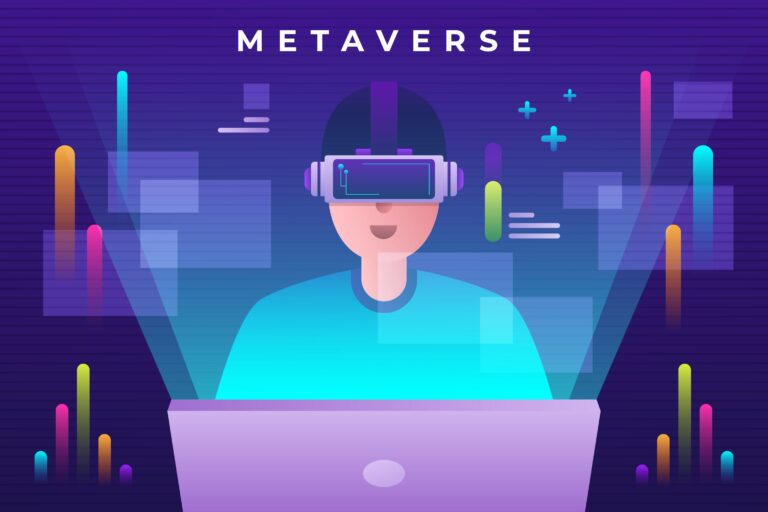With all the fuss around Web 3.0, the main question now is if it can really replace Web 2.0 we are so used to. And if it can, what are the main issues to overcome? There are particular challenges in this booming industry.
The era of Web 2.0 created an entirely new understanding of a virtual world, with big players like Facebook and Google striking its reach with billions of dollars of profit and tremendous influence on the shape of the internet. But there is no guarantee that things will continue in the same way. The 30-year history of the Web remembers the collapses of once-unbreakable projects. MySpace is just one of the many prominent examples.
In the last years more than ever concerns about the gathering and usage of users’ data started to appear and on top of it the doubt about content creators getting fairly paid for their efforts. Web 3.0 is supposed to resolve all of those, by bringing power and control back to the people. The leaders of the Web 2.0 market also picked up the excitement of the new approach — Facebook changed its name to Meta over a year ago and announced its plans to create a Metaverse.
While the general idea and intention of the Web 3.0 are widely accepted, there are still certain issues to overcome. The critics of the new concept are pointing to the vast energy consumption of some blockchains, mainly the ones utilizing a Proof-of-Work consensus mechanism. They notice that the creation of a level playing field shouldn’t be at the cost of the environment. Another concern is safety issues, as many DeFi protocols and cross-chain bridges suffered from massive hacker attacks losing billions of users’ funds.
So for Web 3.0 to reach its highest potential, it needs the infrastructure it relies on to have fully decentralized data management, meaning those projects should give up the appliance of the centralized services, such as Amazon Web Services, for example. The owners also need to have some control and blockchains should become completely immutable, affordable, and also more eco-aware. There is no way to succeed without taking into consideration all those factors.

JP Morgan estimated the Metaverse as a 1$ trillion opportunity — a digital phenomenon that will change the way we work and play online. But before it really goes massive, there are a number of concerns to take care of. For example, the lack of interoperability is also an issue if we want to talk about the massive adoption.
As the Internet had its first years of being rather clunky and uneasy, Metaverse also will have to go a long way before it will work smoothly, easily and intuitively. There is still a long way to go until people will be able to use the metaverse without even realizing it.
This point takes us to the other blockchain technology use cases, which also include the possibility for immutable ledgers to drag the healthcare sector to the 21st century, digitizing medical records and making them easily available for multiple facilities. And that’s where comes another problem: the industry has access to an extensive amount of data and the confidentiality of the patient’s personal information is sacrosanct. Only the networks can offer interoperability, immutability, security, transaction transparency, and medical data sovereignty. Blockchain technology can revolutionize the industry by getting rid of the sheer volume of fake medicines — with about 10% of all the meds in circulation being fake, according to some estimations.
Inery is a new Layer-1 blockchain network built to break through most of the rising issues — the seamless connection between the systems, applications, and numerous networks. With its database management solutions, ensuring a high throughput, low latency, and complex query requests it also allows users to truly own their own data. It applies a Proof-of-Stake consensus, making the network quite safe for the environment.
The project team also states that the project is easily scalable, energy-efficient, tamper-proof, speedy, and resistant to Sybil attacks. Inery is capable of achieving 5000 transactions per second with new blocks created each half a second without compromising on security.
Dr. Naveen Singh, the CEO of Inery revealed that the project is focused on envisioning a decentralized, secure, and environmentally sustainable architecture to manage the databases. The Ivery blockchain offers an affordable and scalable solution that allows users to issue and control data assets making data better secured and more accessible at the same time.
According to the project team, a big number of milestones have been already achieved, and Inery is also listed by Huobi. After the launch of the testnet, Inery secured a $50 million investment commitment from GEM and other contributors, such as Metavest and Truth Ventures. Moreover, the company attracted some well-known and experienced personalities. For instance, the founder of Orange Telecom now serves as a chairman, while the ex-Vice President of Apple’s global marketing team joined Inery as a principal advisor.
The project carries ambitious plans for entering more partnerships that will expand the use cases of the network. According to the plan, the mainnet is to be launched in the first quarter of 2023 allowing users and developers to see and try out how the future of Web3 looks.